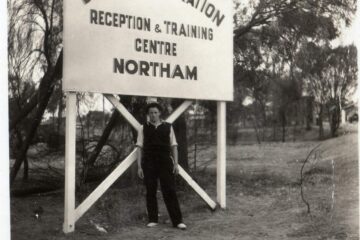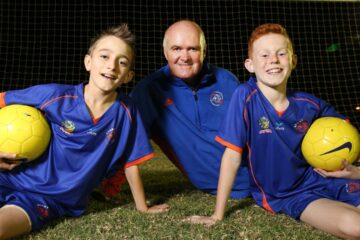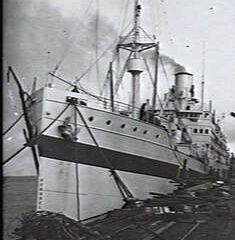Information provided by Peter’s son Laurie

Early Life and Athletic Career
Petrus “Peter” or “Piet” van Rijn was born in The Hague (Den Haag), Netherlands, on 18May, 1917 (and passed away on 26th June, 2002). His parents were Piet van Rijn and Antonius Hendrieka Knijf. His mother was born in Bemmel and his father was born in Den Haag but they lived in Zoetermeer where he worked for the railway. They had a hard life in the countryside and the children slept in a cupboard bed. In their retirement they even picked cucumbers for the neighbouring farm. They kept chicken and rabbits which were slaughtered at Christmas time for the celebratory dinner. Gin was the favoured drink; often emptying the bottle.
As a child, Piet was dissuaded from playing soccer (football) due to the belief that, as he had a large heart, he was unsuitable for the sport. Instead, he turned to distance running and became CHAMPION OF DEN HAAG in 1500m and 3 000m distances. By 1938 he was Holland’s top ranked 1500m runner and 5th ranked in 5000m and 10000m. He came 2nd in a national 10000m race.
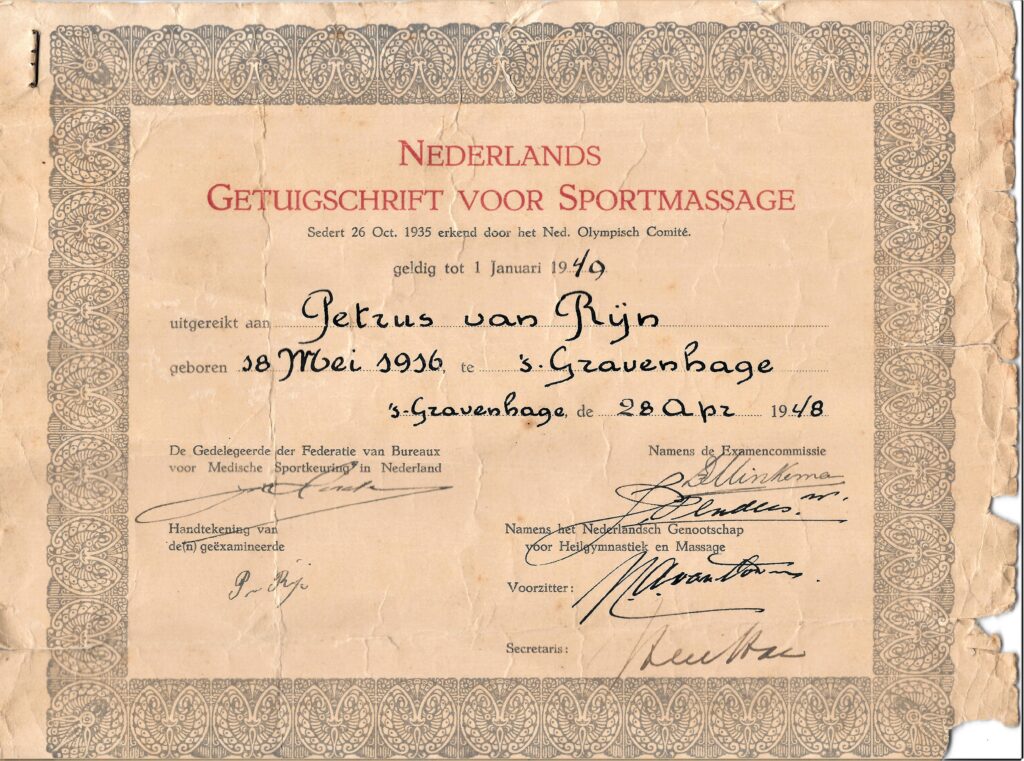
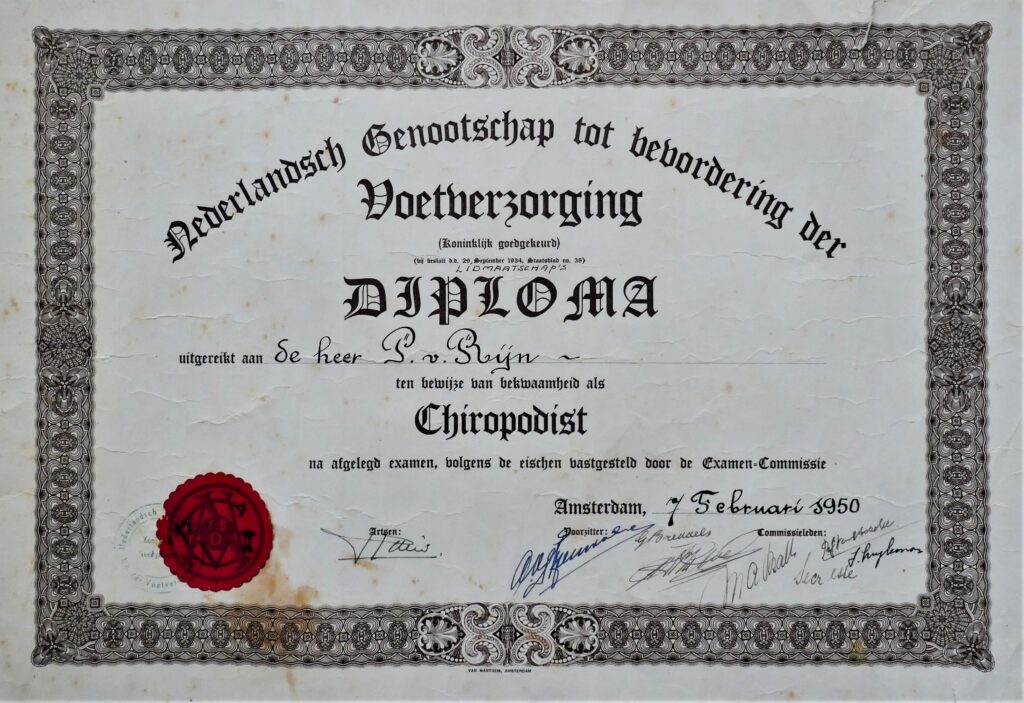
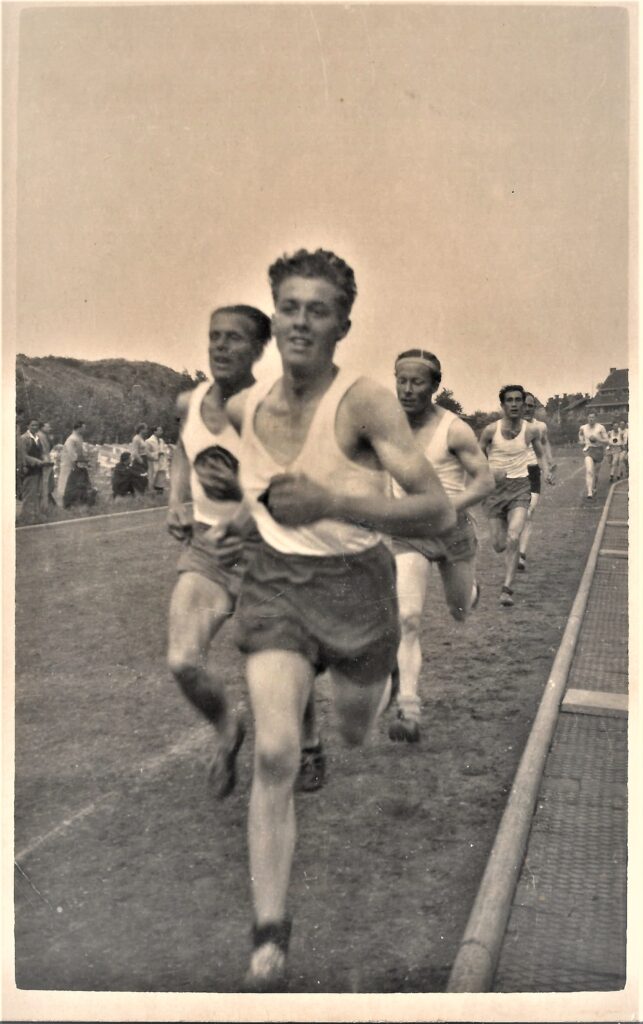

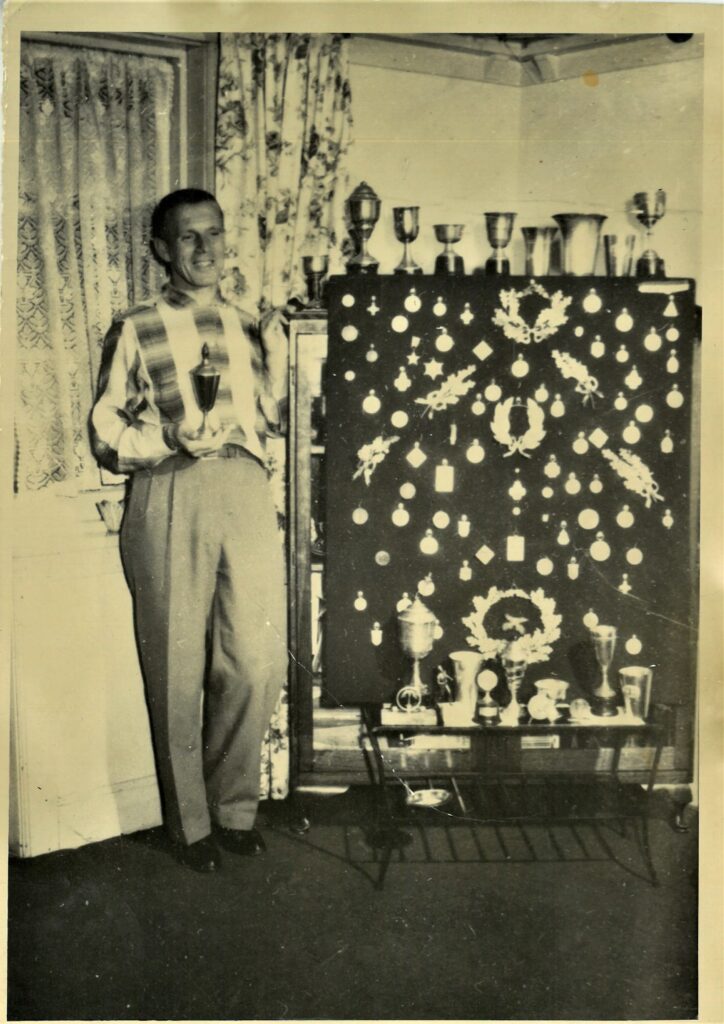
He was also physiotherapist for the Dutch runners at the Berlin Olympics in 1936 where runners like Martinis Osendarp ran 3rd to Jesse Owens.
His ambition was to compete in the 1940 Olympic Games. He had defeated nationally selected runners in these distances but could not qualify for the national team for the Olympics when it counted.
War Years and Personal Struggles
Piet’s interests extended to physical conditioning and the human body, prompting him to study massage and chiropody. He was working in these fields when Germany invaded the Netherlands in May 1940 and for 2 weeks in March 1936 became a physical instructor for the Commando School in the Dutch army until the Occupation took over.
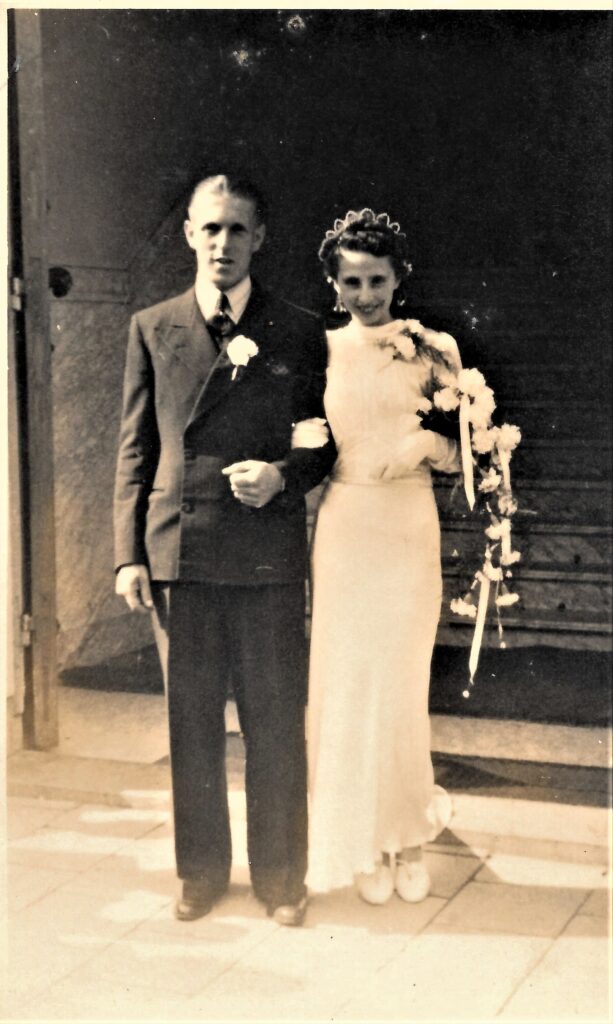
During the Nazi Occupation, Piet, a Catholic, fell in love with and, due to the beginning of banning marriages of mixed religions between Jews and Catholics, married Anna van Hoorn, a secular Jewish girl, on 16 August 1942.
Anna’s parents were Gustaaf and Sara (nee. Wolff) van Hoorn and also lived in Den Haag. They ran a successful café called ‘De Lekkere Hap’ The delicious bite) where Gustaaf became an excellent pastry chef. They also set up a hosiery stall which he named the ‘Aurore’ and as it expanded, they reestablished it as ‘De Kousen Keizer’ (The Stocking Emperor). Due to his involvement in textiles, Gustaaf was forced to work for the German army in the procurement of material for the German military. Also, at this time his wife Sara was made to walk to a medical hospital many kilometres away to be sterilised as part of the anti-Jewish elimination program.
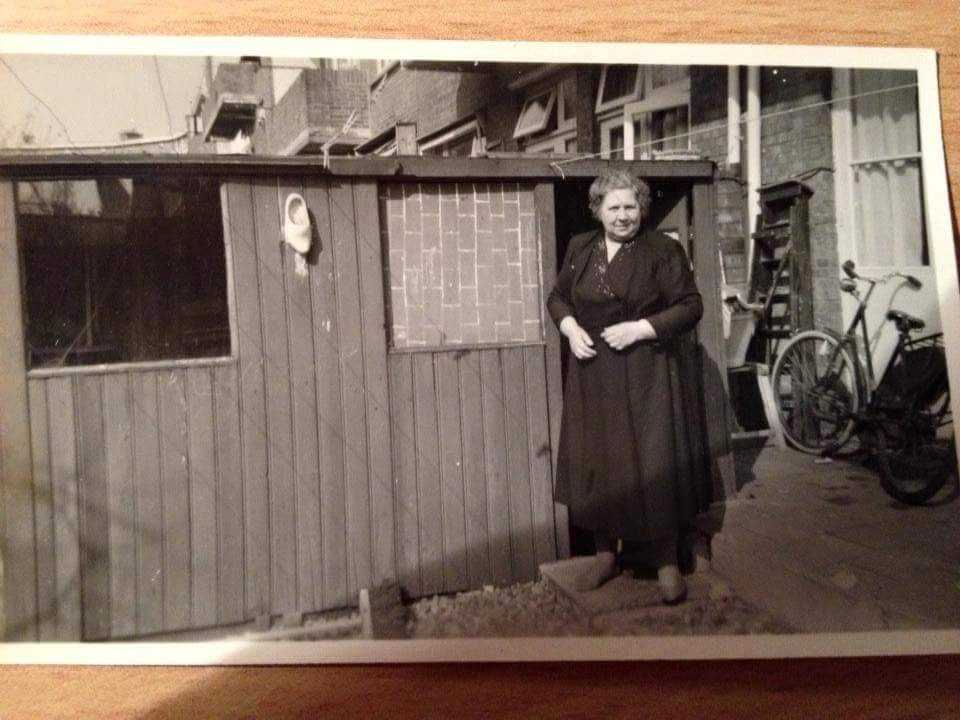
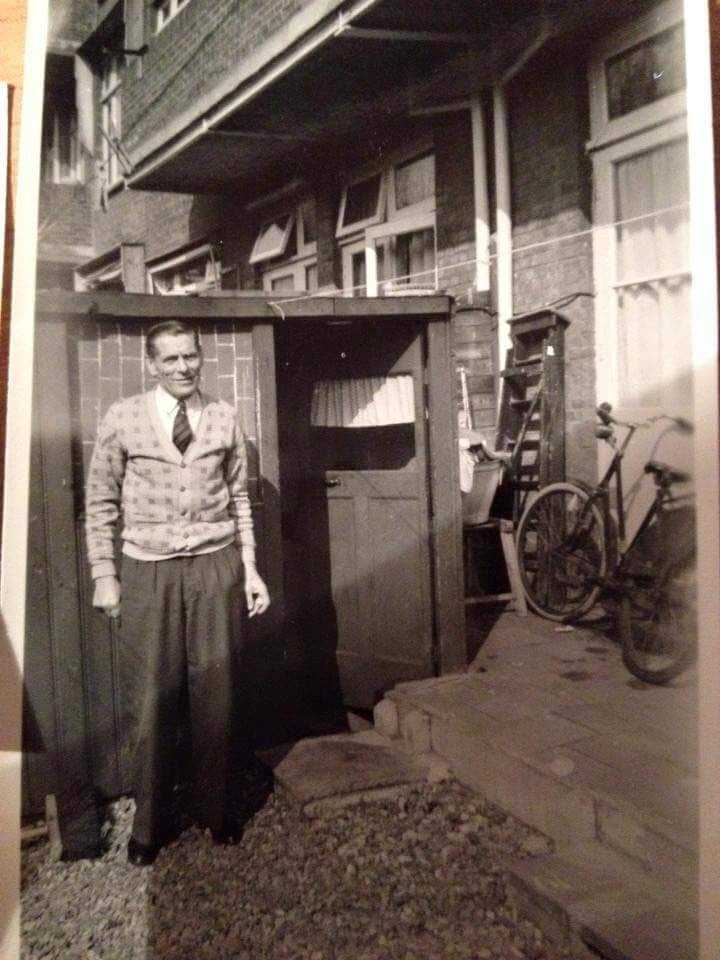
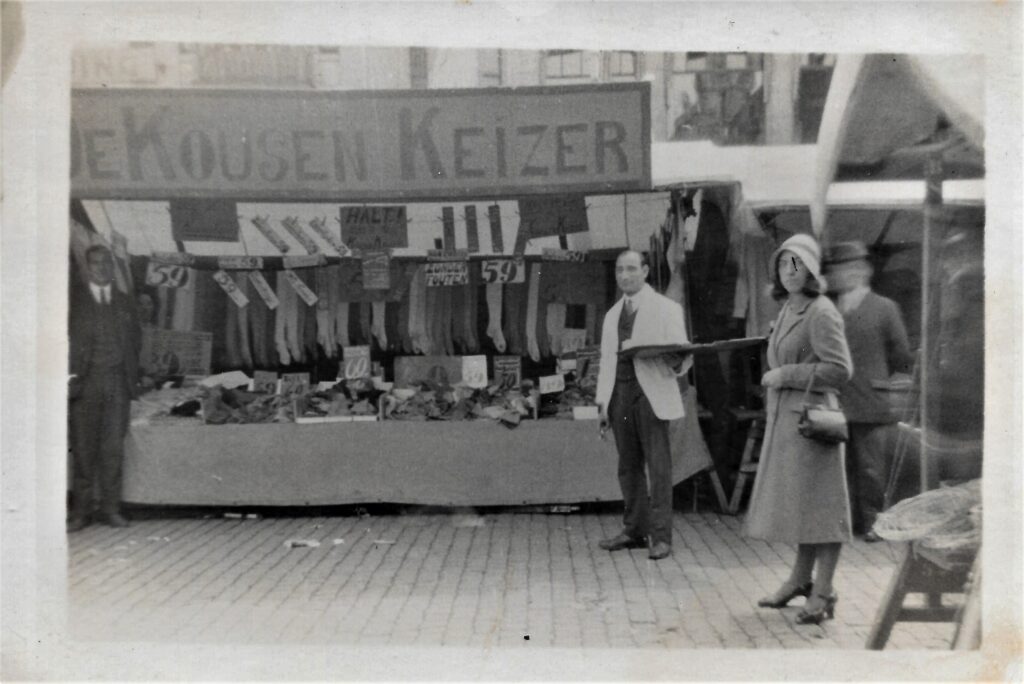
The Occupation forced them into many difficult decisions. Initially the extended family moved into a cousin’s multi-storey home in Den Haag to avoid the German invaders taking the Jewish relatives prisoner. However, through threats of safety to the entire family and all relatives, it created further difficult times particularly when Piet had to hand over Anna’s three Jewish cousins (aged 4, 6 and 8) to the Nazis at a German Collection Centre to save the rest of the family, and this led to the deaths of the children in Sobibor on 11 June, 1943. Their parents had been killed earlier in Auschwitz. A terrible and sad moment in his life, a true ‘Sophie’s Choice’ moment, which he could never forget.
Soon after the German’s expanded their recruitment process for workers and made it compulsory for any male between 17 and 40 years of age to attend the work camps. Then Piet went underground, with Jan Janssen his cousin, to avoid the work camps forced on by the German military. This placed an extra toll on food supplies as coupons were only for those registered on the ‘books’ in each family and they weren’t registered. He spent the rest of the time promoting propaganda and communication matters in the cause of the war.

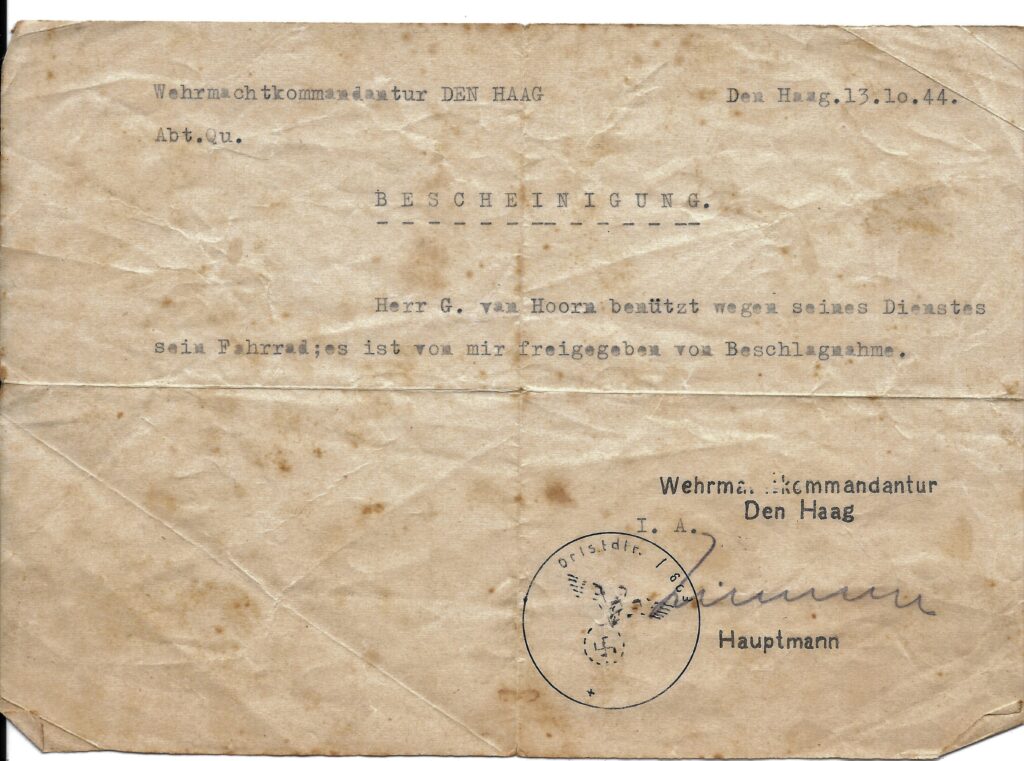

Post-War Career and Emigration to Australia
After World War II, Piet resumed his chiropody and massage practice while training Dutch Army commandos. He served in the Dutch National Army for 3 years (1945-1948) and oversaw 7 platoons for 6 weeks of intensive training to prepare them for battle in Indonesia. Most became officers as they were specially selected personnel. He also became a representative for the military for their ‘Olympic’ Games.
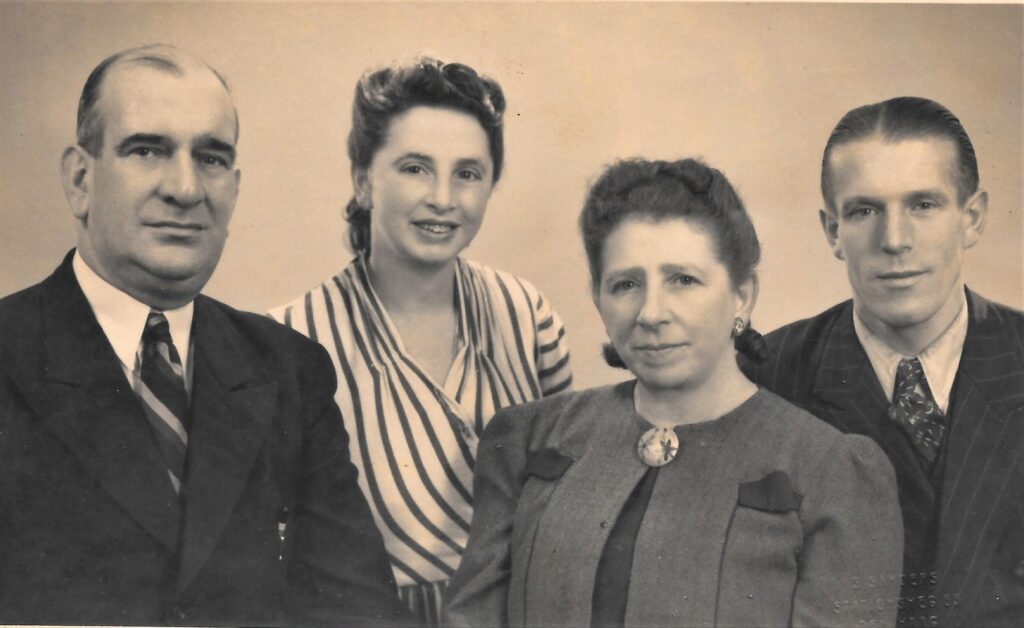
Struggling with the war’s memories, together with his parents-in law and one year old son, Gustaaf, Piet and Anna emigrated to Australia in 1950, where he adopted the name Peter Van Ryn. They lived with their cousins, with which they shared accommodation during the war, in Double Bay. Two families consisting of 10 individuals in a small apartment was difficult but they managed to do so in good spirits. Rental properties were scarce in those times but eventually one became available in St Neot Avenue, Potts Point. To secure the property they had to pay a huge amount of money, believed to be a few hundred pounds, as bond money (which was never formally recorded) for a two-bedroom apartment. Eventually they managed to save enough money to purchase their own house in1966 in Gladesville where they lived for much of their remaining years. In fact, this house belonged to Arthur Summons a famous rugby union player in the day.
Settling in Sydney, Peter worked at Garden Island Naval Base and continued his massage and chiropody practice as a side job. He became deeply involved in athletics in Rushcutters Bay, Sydney, by becoming their trainer. After a few years he became involved in football as a trainer and physiotherapist joining the Dutch club Sydney Austral in 1954 and then in 1956 the Jewish Club Hakoah as physiotherapist whose home ground was Wentworth Park.
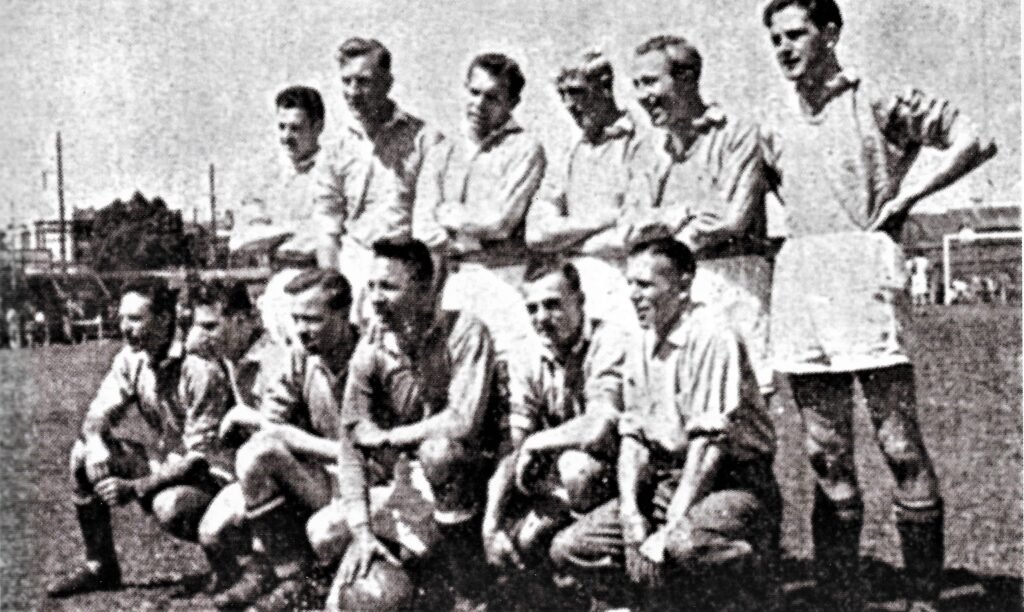

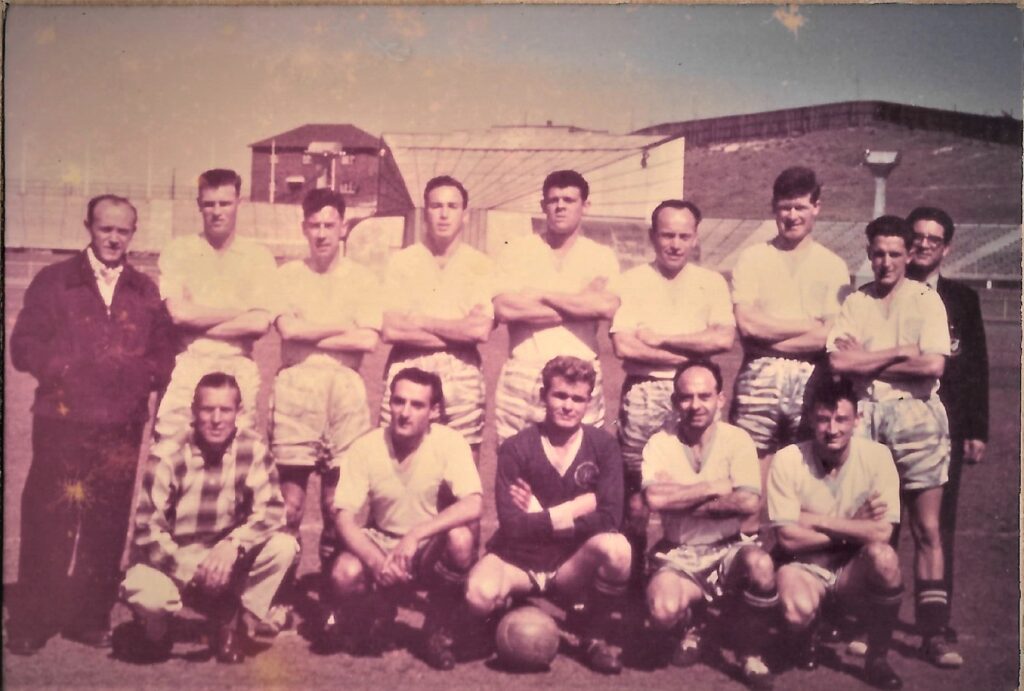
To confirm his and the family’s passion for Australia and all it had to offer, he and Anna became Australian citizens on 16th July 1963. All his thoughts were spent appreciating this wonderful country which had accepted him after the turmoils of WW2 in The Netherlands.
Family Life and Commitment to Football
Peter’s life revolved around football, balancing his job at the Commonwealth Bank with his responsibilities at Hakoah. Laurie, his son, recalls that often 3 times a week his father would start work leaving home at 5am and then returning home around 2 or 3pm to enable him to eat a snack and then head off to his football commitments. Then there was the commitment for the weekend game. Laurie recalled the family’s total support for Peter’s football commitments even if it meant living with a minimum amount of funds; never a negative thought was held. Peter’s dedication saw him become a key figure in the Australian football scene, eventually joining the Australian National Youth team and then the Senior National team for a tour of Vietnam in 1970. When Rale Rasic became coach of the national team Peter remained as gear master and physiotherapist for the Socceroos. He went on world tours with this team in 1970 and 1978, not to forget their qualification to the FIFA World Cup in 1974. He became known for his meticulous care and organisational skills, earning the nickname “the Dutch Cleaner.”
Role in Australian Football and the 1974 World Cup
Peter played a crucial role as a physiotherapist and gear master, and support person for the Australian national team, especially during the 1974 World Cup in West Germany. This was an extremely trying time for him as he had to cast aside his contempt for the Germans who had caused him so much heartache during the war. So strong was his national pride that these feelings were put to one side so he could give his best to the Socceroos.
This passion had also been on display and received great recognition in 1972 when riots occurred after the team defeated a South Vietnam youth team and the players were refusing to play the second match of the tour. Rale, who also had suffered during war, knew of the respect the players had for Peter and asked him to address the team. His speech which related to his past and present times was so passionate the team unanimously elected to play the game.
He was a father figure to the team and was integral in maintaining team morale and health. Despite lacking formal qualifications as a physiotherapist, his expertise and dedication were unquestioned.
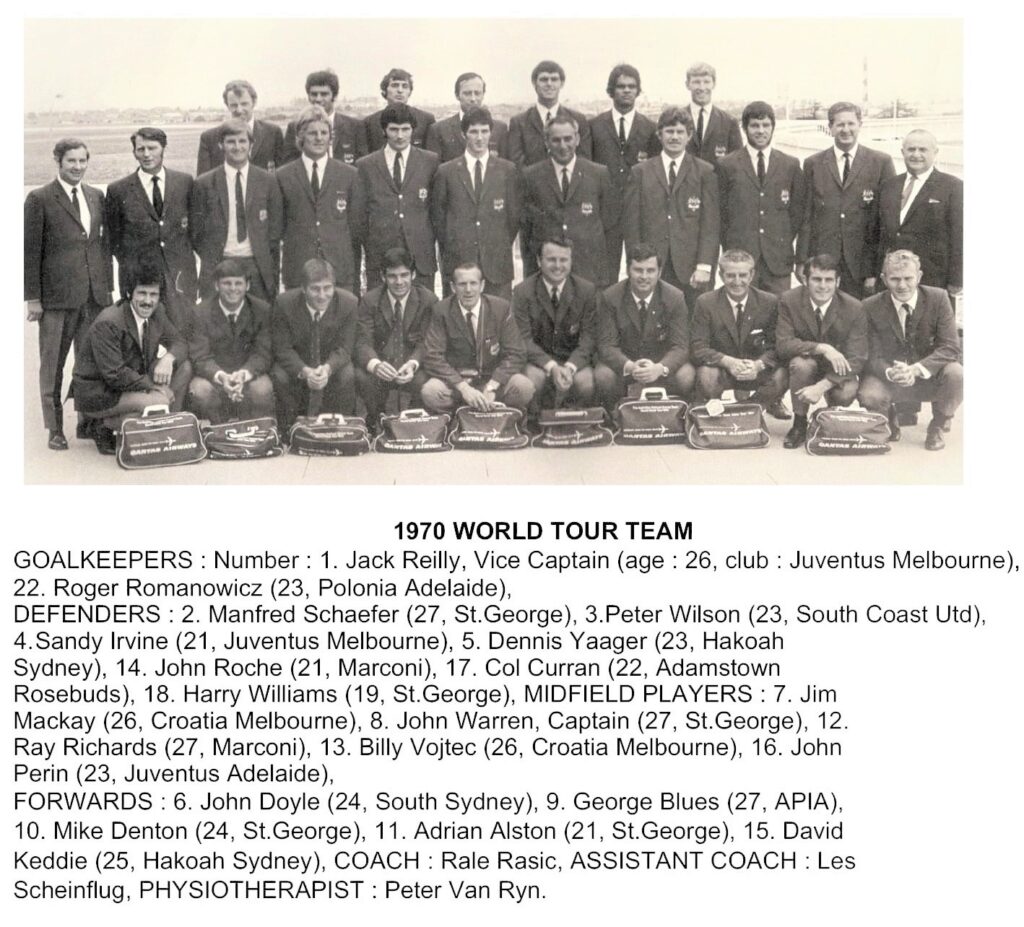
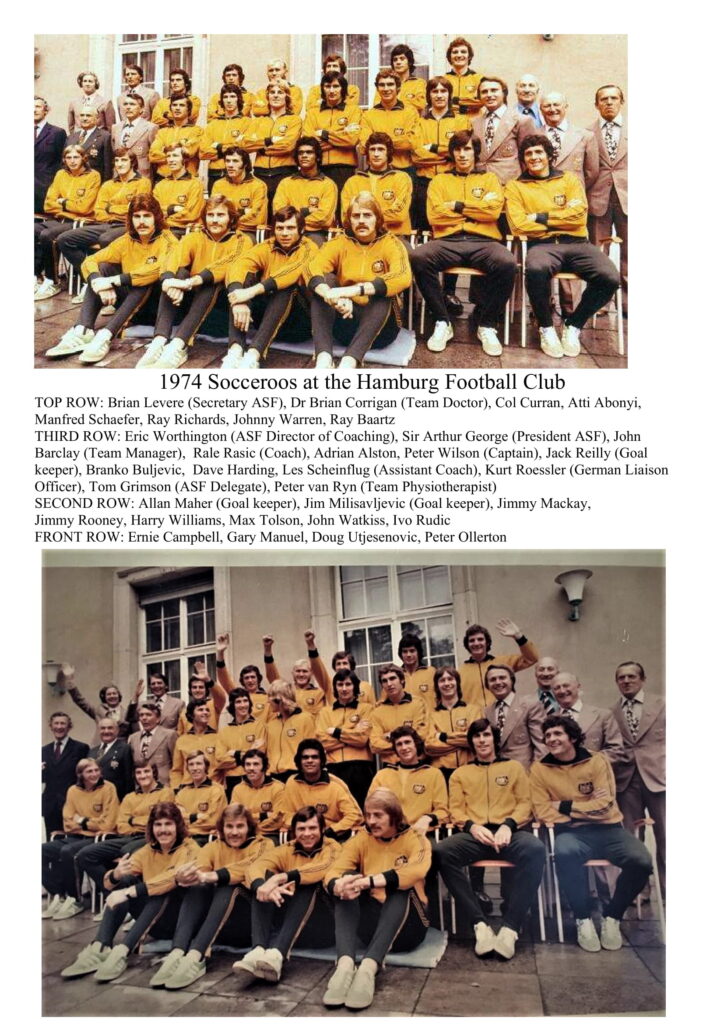
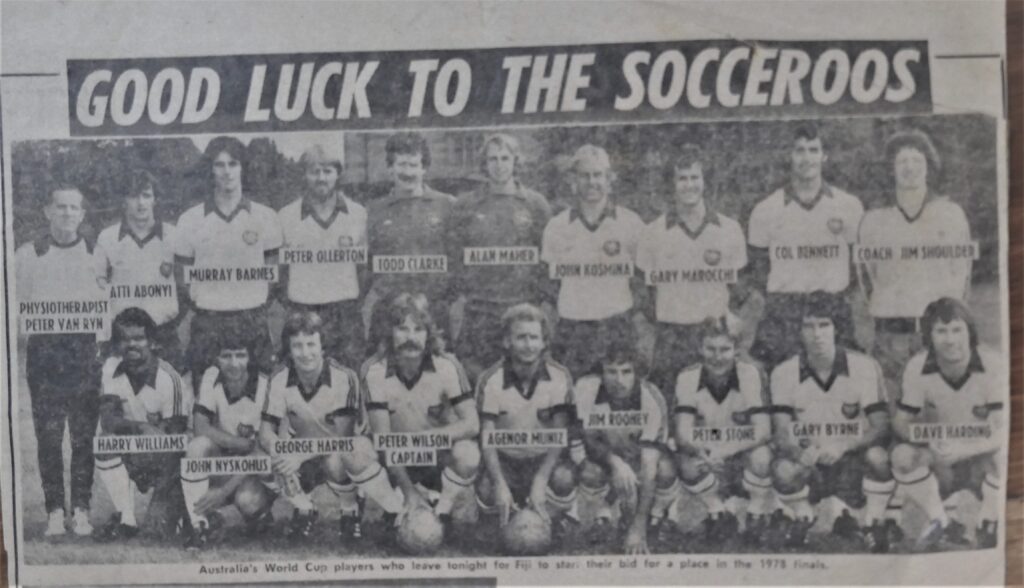
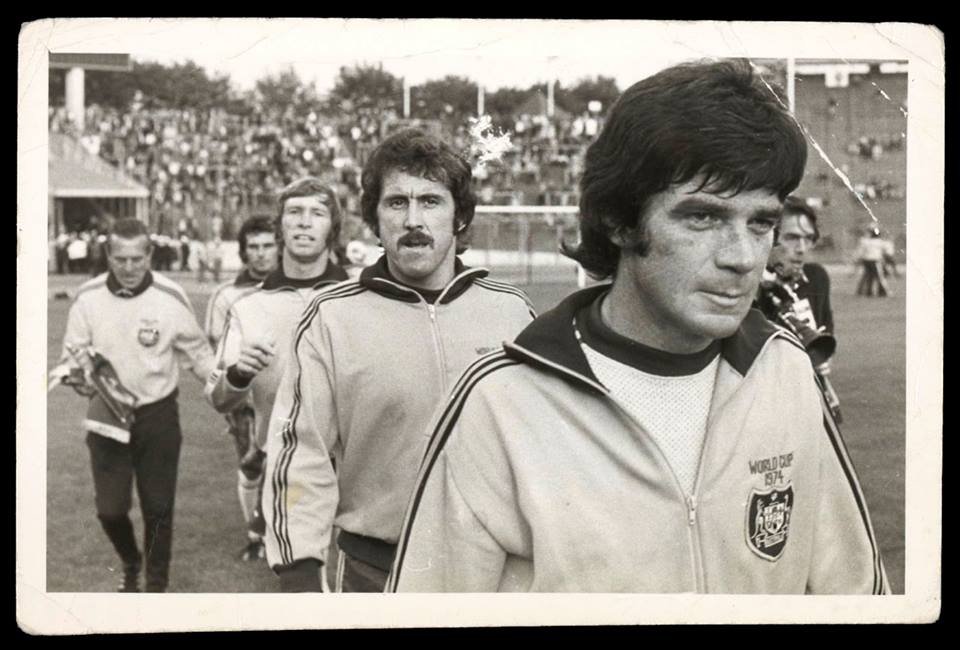

As a special side matter, Peter worked for a season with the Australian ballet with Sir Robert Helpman and was offered a full-time position and offered to tour South America, but he resigned so he could then give total commitment to the Australian National Soccer Team in its endeavours to qualify for the 1978 FIFA World Cup; such was his passion to the football and the national team.
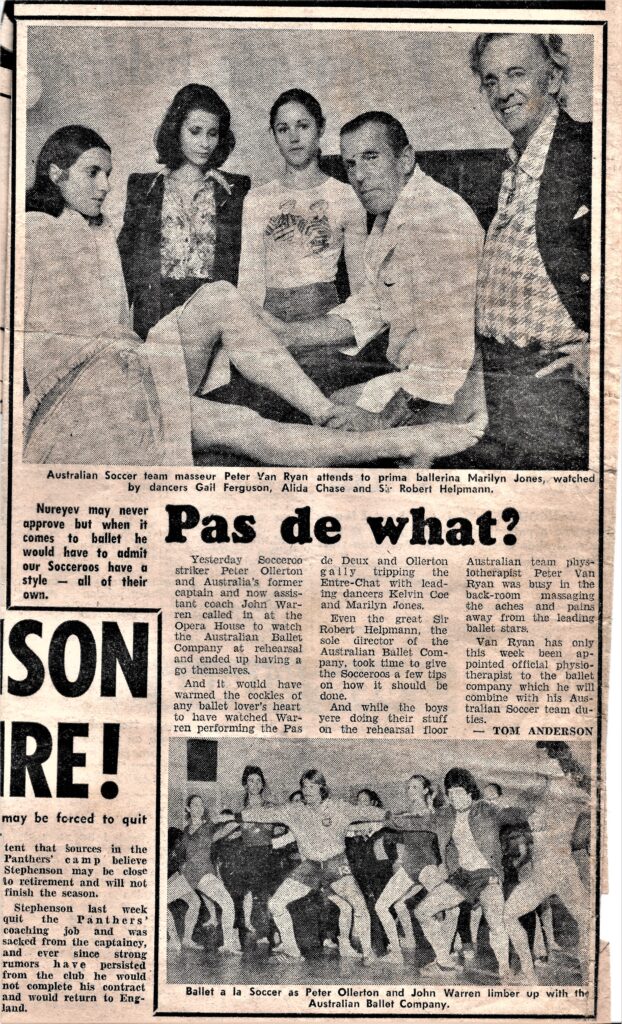
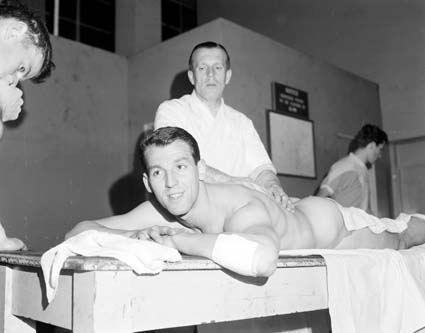
Later Years and Legacy
Peter’s later years were marked by personal loss and professional disagreements. He left Hakoah in 1976 after conflicts with the new players and new coach. Under the request of Rale Rasic, Peter briefly joined Marconi for one season.
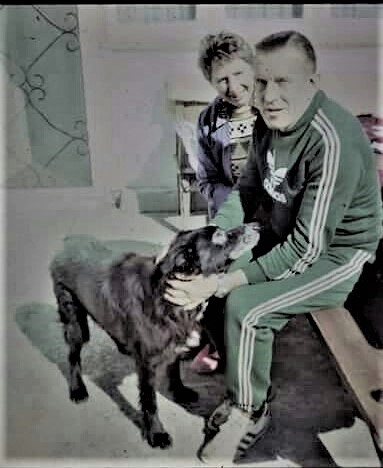
In 1980, after the death of his elderly mother-in-law Sara and the unexpected death through cancer of his wife Anna, Peter found life hard and resigned from the national team in 1980 due to disputes with coach Rudi Gutendorf about player welfare.
He turned to volunteer work at the Jewish Montefiore Aged Care Home where he became an official volunteer helping to move patients around, feed them and run errands for them, and eventually took on the role as discussion group coordinator spending each week at the facility assisting residents to be mentally stimulated as well as just being an ear for those who needed company. This gave him added purpose in his life and revealed his care for others, all the while dealing with mental health struggles and guilt from his wartime actions.
In his later years he joined the Dutch club DAS Neerlandia Club
in French’s Forest and became a personality there. Such was his impact there that when didn’t show up in person in the end, the club instigated a search through the government using a Dutch support service where they found not only him but about his background and were so impressed in what he had achieved.
Death and Recognition
Peter van Ryn died in June 2002 at 86 from lung cancer and a brain tumour. In 2003, he was inducted into the Football Australia Hall of Fame, recognised for his long service and dedication to the sport. Testimonials from Johnny Warren, Frank Lowey and Doug Utjesenovic highlighted his care for players, skill as a physiotherapist, organisational skills and the profound impact he had on the teams he worked with. He was recognised for several items but especially through the introduction of a system of close consultation between the medical staff and coaching staff for the medical treatment of players and player welfare.
Peter Van Ryn’s life was a testament to resilience and dedication, marked by not only a love for his family but personal sacrifice, professional excellence, and an enduring love for football. His legacy lives on through his contributions to Australian soccer and the lives he touched along the way.

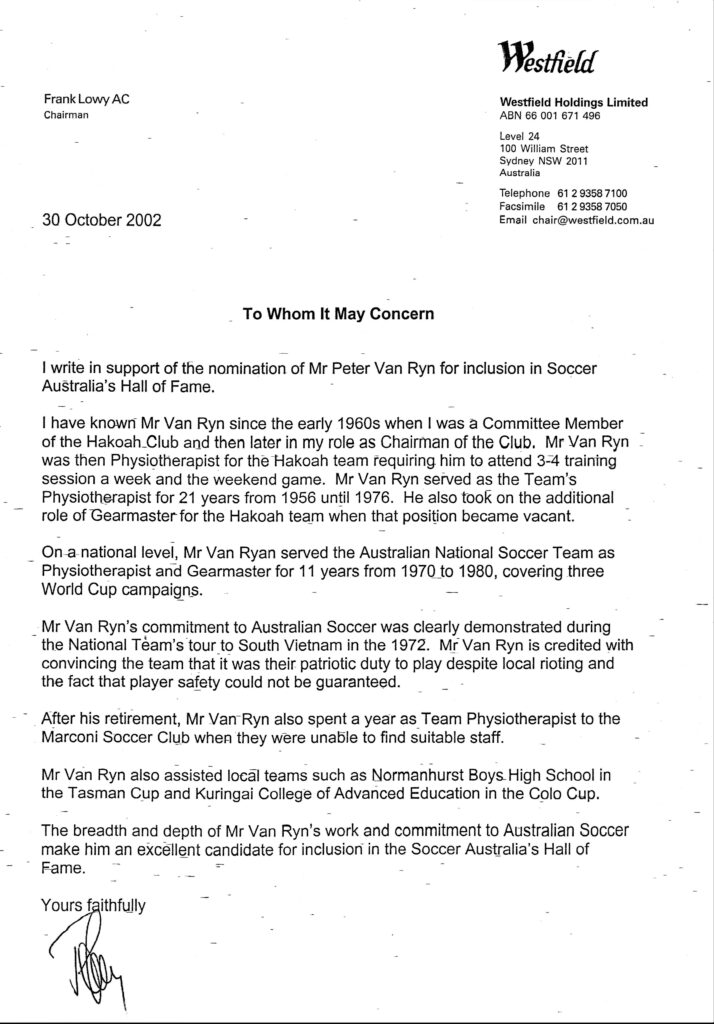
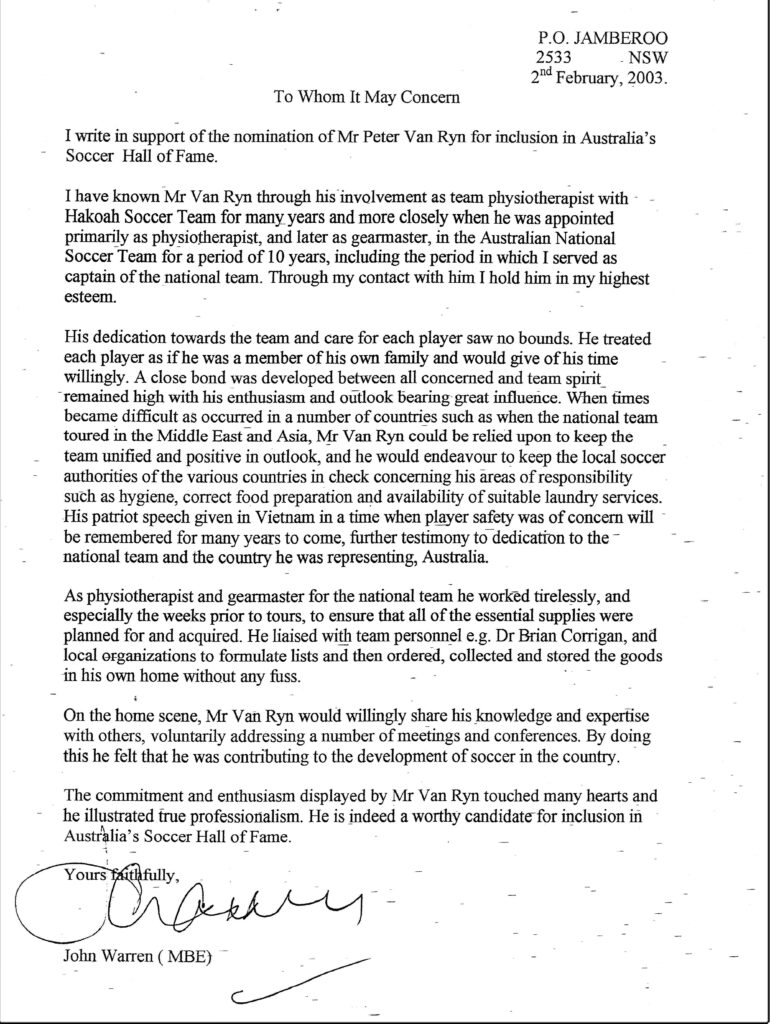
See also Clogball
